Do you have a question about the Eaton SC9000 EP and is the answer not in the manual?
Explains standard safety symbols used in the manual.
Highlights general cautions and warnings for user safety and product protection.
Warns about high voltage stored in DC link capacitors and required discharge time.
Emphasizes the necessity of solid grounding for the SC9000 EP drive.
Outlines the scope and intent of the user manual addendum.
Details the SC9000 EP drive's capabilities, configuration, and core components.
Lists the key features and benefits of the SC9000 EP drive.
Indicates the revision history of the manual.
Directs users to further technical data and industry standards.
Provides contact details for Eaton sales offices and support services.
Details essential safety measures for working with electrical equipment.
Describes the built-in safety mechanisms of the medium voltage drive.
Explains how to locate and interpret the drive's rating nameplate.
Provides initial warnings and guidelines for handling heavy equipment.
Lists necessary equipment for safely lifting drive shipping sections.
Outlines steps to inspect the unit upon arrival for damage and accuracy.
Provides guidelines for proper storage conditions to prevent damage and condensation.
Details precautions and methods for physically moving the drive sections.
General information on installing the SC9000 EP by trained personnel.
Covers necessary steps for preparing the installation site according to codes.
Instructions for installing anchor bolts and aligning drive sections.
Information on loose shipping of blower assemblies due to height restrictions.
Details on connecting main bus and ground bus between unit sections.
Specifies hardware and torque for main bus connections.
Details ground bus linking using flexible shunts and hardware.
Explains methods for coupling drive units and shipping splits.
Describes routing of low voltage cables within the drive enclosure.
Provides warnings and details on connecting incoming power sources.
Explains the chapter's focus on SC9000 EP AR differences.
Describes SC9000 EP AR features and compliance with industry standards.
Details approximate shipping weights for SC9000 EP AR sections.
Refers to job-specific drawings for exact shipping section connections.
Explains the chapter's focus on SC9000 GP differences.
Describes SC9000 GP features, standards, and installation.
Outlines requirements for customer-supplied power and components.
Specifies requirements for input power protection and fused contactors.
Details the requirements for 120 Vac control power circuits.
Lists I/O requirements for the feeder connection.
Lists I/O requirements for the control system.
Provides steps for safely discharging the DC bus and grounding the drive.
Details procedures for grounding and removing/replacing the inverter.
Highlights static sensitivity and general safety precautions for handling components.
Covers critical warnings and step-by-step procedures for inverter removal and installation.
Introduces the addendum's scope for optional equipment.
Lists the optional features covered in this addendum.
Explains the function and application of dV/dt filters.
Details the sine filter's role in reducing harmonic distortion.
Describes the system for controlling multi-motor transfers.
Covers options for controlling synchronous motors.
Discusses the drive's capability for high voltage inputs.
Outlines the available bypass control systems.
Directs users to further technical documentation.
Provides contact details for Eaton support.
Guides the decision process for applying dV/dt filters based on motor and cable length.
Guides the decision process for applying dV/dt filters based on motor and cable length.
Specifies when to use dV/dt filters with standard induction motors.
Specifies when to use dV/dt filters with inverter duty motors.
Presents selection criteria and models for SC9000 EP dV/dt filters.
Describes the typical physical placement of dV/dt filters within the drive lineup.
Shows the typical cabinet dimensions for a dV/dt filter.
Details the cooling system requirements for the dV/dt filter cabinet.
Outlines periodic maintenance procedures for the dV/dt filter system.
Covers troubleshooting steps related to dV/dt filter thermal switches and pressure switches.
Lists part numbers for replacement components such as fans and filters.
Defines a sine filter and its role in reducing Total Harmonic Distortion (THD).
Defines a sine filter and its role in reducing Total Harmonic Distortion (THD).
Explains how sine filters reduce harmonics for better motor performance.
Describes how sine filters are mounted within their own cabinets in the drive lineup.
Guides the application decision for sine filters based on motor type and cable length.
Provides catalogue numbers and ratings for sine filters based on motor horsepower and current.
Details cooling needs and monitoring for sine filters, including component protection.
Outlines periodic inspections and maintenance for sine filter components.
Warns about programming procedures when a sine filter is connected.
Explains the function of synchronous transfer for multi-motor systems.
Explains the function of synchronous transfer for multi-motor systems.
Lists the required components for the synchronous transfer system.
Describes the role of the output reactor in dampening current transients.
Explains the function of the bypass contactor connecting motors to the utility feed.
Describes the motor select contactor connecting motors to the AFD feeder bus.
Details the PLC system used for controlling synchronous transfer operations.
Describes the operation of the synchronous transfer system.
Outlines the steps involved in transferring motors between AFD and utility power.
Details customer commands and status monitoring for system control.
Discusses available controller options for synchronous transfer systems.
Refers to parameter groups for configuring synchronous transfer.
Explains how the SC9000 EP monitors faults and alarms for transfer system elements.
Points to O&M manuals for synchronous transfer system elements.
Describes synchronous motors and their types.
Describes synchronous motors and their types.
Details essential rotor DC excitation components for synchronous motors.
Explains how the SC9000 EP controls synchronous motor stator and rotor excitation.
Covers Eaton's control systems for brush-type synchronous motors.
Points to O&M manuals for synchronous motor control systems.
Explains the SC9000 EP's capabilities for high voltage inputs and additional cabinet requirements.
Explains the SC9000 EP's capabilities for high voltage inputs and additional cabinet requirements.
Shows diagrams related to high voltage input voltage panels.
Details the Ampgard Type SL vacuum contactor used for high voltage applications.
Displays images of the high voltage input compartment and cable terminations.
Provides references for high voltage input system installation and maintenance.
Explains bypass control for situations when the SC9000 EP AFD is offline.
Explains bypass control for situations when the SC9000 EP AFD is offline.
Lists the two primary bypass control types: Full Voltage and RVSS.
Describes the system for switching motor power between utility and AFD.
Shows a typical panel layout for a full voltage bypass system.
Details the operational steps for normal and bypass modes.
Explains reduced voltage solid-state bypass for smoother motor starts.
Describes the sequence of operations for the RVSS bypass system.
Provides references for bypass control system manuals.
Explains standard safety symbols used in the manual.
Highlights general cautions and warnings for user safety and product protection.
Warns about high voltage stored in DC link capacitors and required discharge time.
Emphasizes the necessity of solid grounding for the SC9000 EP drive.
Outlines the scope and intent of the user manual addendum.
Details the SC9000 EP drive's capabilities, configuration, and core components.
Lists the key features and benefits of the SC9000 EP drive.
Indicates the revision history of the manual.
Directs users to further technical data and industry standards.
Provides contact details for Eaton sales offices and support services.
Details essential safety measures for working with electrical equipment.
Describes the built-in safety mechanisms of the medium voltage drive.
Explains how to locate and interpret the drive's rating nameplate.
Provides initial warnings and guidelines for handling heavy equipment.
Lists necessary equipment for safely lifting drive shipping sections.
Outlines steps to inspect the unit upon arrival for damage and accuracy.
Provides guidelines for proper storage conditions to prevent damage and condensation.
Details precautions and methods for physically moving the drive sections.
General information on installing the SC9000 EP by trained personnel.
Covers necessary steps for preparing the installation site according to codes.
Instructions for installing anchor bolts and aligning drive sections.
Information on loose shipping of blower assemblies due to height restrictions.
Details on connecting main bus and ground bus between unit sections.
Specifies hardware and torque for main bus connections.
Details ground bus linking using flexible shunts and hardware.
Explains methods for coupling drive units and shipping splits.
Describes routing of low voltage cables within the drive enclosure.
Provides warnings and details on connecting incoming power sources.
Explains the chapter's focus on SC9000 EP AR differences.
Describes SC9000 EP AR features and compliance with industry standards.
Details approximate shipping weights for SC9000 EP AR sections.
Refers to job-specific drawings for exact shipping section connections.
Explains the chapter's focus on SC9000 GP differences.
Describes SC9000 GP features, standards, and installation.
Outlines requirements for customer-supplied power and components.
Specifies requirements for input power protection and fused contactors.
Details the requirements for 120 Vac control power circuits.
Lists I/O requirements for the feeder connection.
Lists I/O requirements for the control system.
Provides steps for safely discharging the DC bus and grounding the drive.
Details procedures for grounding and removing/replacing the inverter.
Highlights static sensitivity and general safety precautions for handling components.
Covers critical warnings and step-by-step procedures for inverter removal and installation.
Introduces the addendum's scope for optional equipment.
Lists the optional features covered in this addendum.
Explains the function and application of dV/dt filters.
Details the sine filter's role in reducing harmonic distortion.
Describes the system for controlling multi-motor transfers.
Covers options for controlling synchronous motors.
Discusses the drive's capability for high voltage inputs.
Outlines the available bypass control systems.
Directs users to further technical documentation.
Provides contact details for Eaton support.
Guides the decision process for applying dV/dt filters based on motor and cable length.
Guides the decision process for applying dV/dt filters based on motor and cable length.
Specifies when to use dV/dt filters with standard induction motors.
Specifies when to use dV/dt filters with inverter duty motors.
Presents selection criteria and models for SC9000 EP dV/dt filters.
Describes the typical physical placement of dV/dt filters within the drive lineup.
Shows the typical cabinet dimensions for a dV/dt filter.
Details the cooling system requirements for the dV/dt filter cabinet.
Outlines periodic maintenance procedures for the dV/dt filter system.
Covers troubleshooting steps related to dV/dt filter thermal switches and pressure switches.
Lists part numbers for replacement components such as fans and filters.
Defines a sine filter and its role in reducing Total Harmonic Distortion (THD).
Defines a sine filter and its role in reducing Total Harmonic Distortion (THD).
Explains how sine filters reduce harmonics for better motor performance.
Describes how sine filters are mounted within their own cabinets in the drive lineup.
Guides the application decision for sine filters based on motor type and cable length.
Provides catalogue numbers and ratings for sine filters based on motor horsepower and current.
Details cooling needs and monitoring for sine filters, including component protection.
Outlines periodic inspections and maintenance for sine filter components.
Warns about programming procedures when a sine filter is connected.
Explains the function of synchronous transfer for multi-motor systems.
Explains the function of synchronous transfer for multi-motor systems.
Lists the required components for the synchronous transfer system.
Describes the role of the output reactor in dampening current transients.
Explains the function of the bypass contactor connecting motors to the utility feed.
Describes the motor select contactor connecting motors to the AFD feeder bus.
Details the PLC system used for controlling synchronous transfer operations.
Describes the operation of the synchronous transfer system.
Outlines the steps involved in transferring motors between AFD and utility power.
Details customer commands and status monitoring for system control.
Discusses available controller options for synchronous transfer systems.
Refers to parameter groups for configuring synchronous transfer.
Explains how the SC9000 EP monitors faults and alarms for transfer system elements.
Points to O&M manuals for synchronous transfer system elements.
Describes synchronous motors and their types.
Describes synchronous motors and their types.
Details essential rotor DC excitation components for synchronous motors.
Explains how the SC9000 EP controls synchronous motor stator and rotor excitation.
Covers Eaton's control systems for brush-type synchronous motors.
Points to O&M manuals for synchronous motor control systems.
Explains the SC9000 EP's capabilities for high voltage inputs and additional cabinet requirements.
Explains the SC9000 EP's capabilities for high voltage inputs and additional cabinet requirements.
Shows diagrams related to high voltage input voltage panels.
Details the Ampgard Type SL vacuum contactor used for high voltage applications.
Displays images of the high voltage input compartment and cable terminations.
Provides references for high voltage input system installation and maintenance.
Explains bypass control for situations when the SC9000 EP AFD is offline.
Explains bypass control for situations when the SC9000 EP AFD is offline.
Lists the two primary bypass control types: Full Voltage and RVSS.
Describes the system for switching motor power between utility and AFD.
Shows a typical panel layout for a full voltage bypass system.
Details the operational steps for normal and bypass modes.
Explains reduced voltage solid-state bypass for smoother motor starts.
Describes the sequence of operations for the RVSS bypass system.
Provides references for bypass control system manuals.
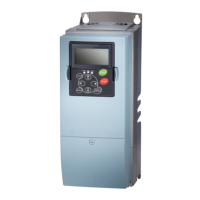
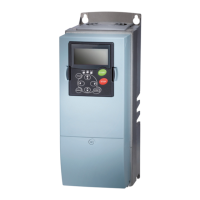
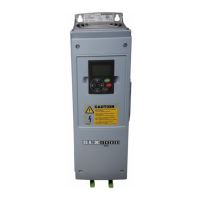





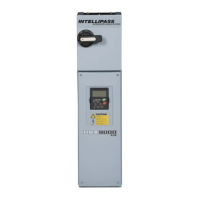
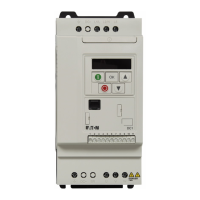

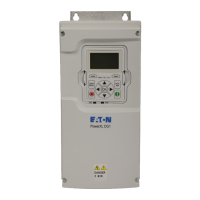
